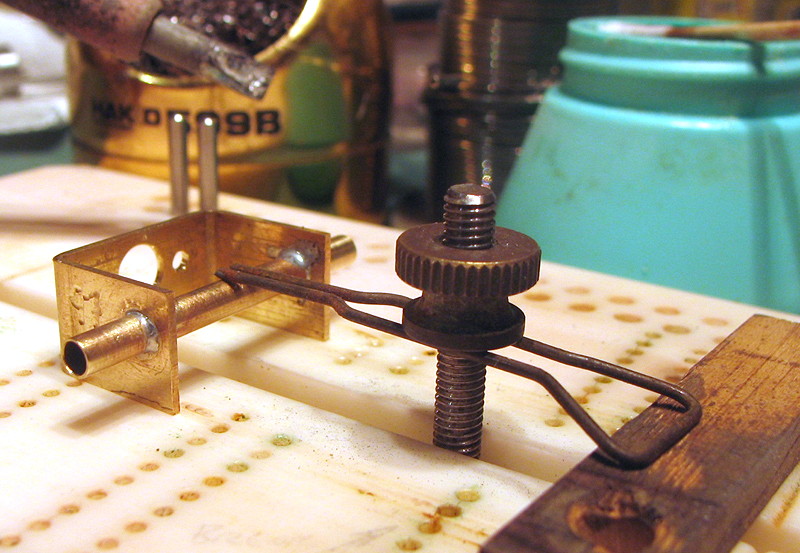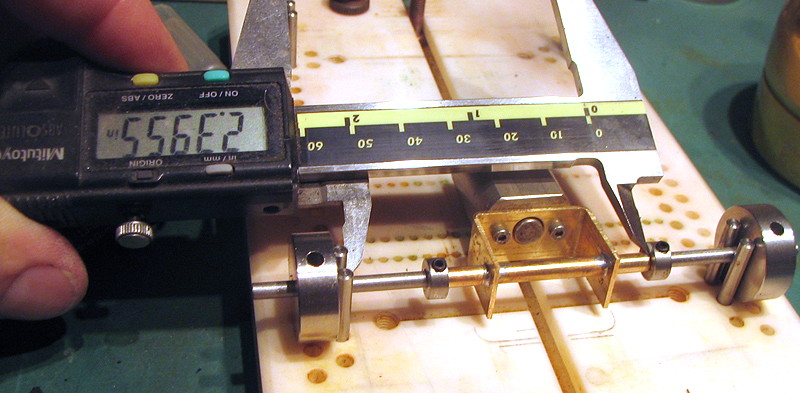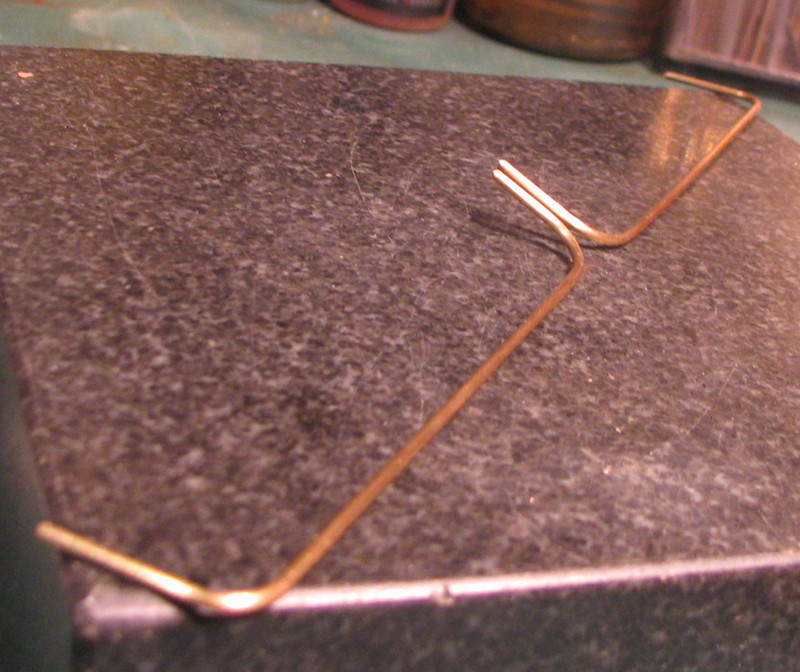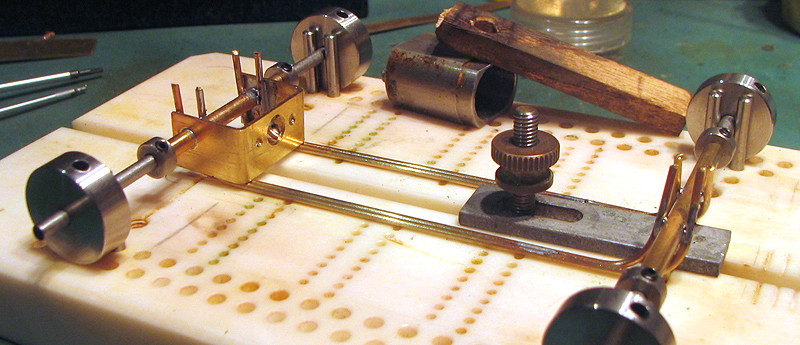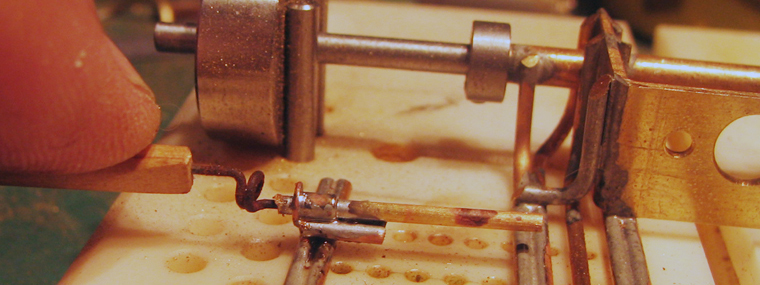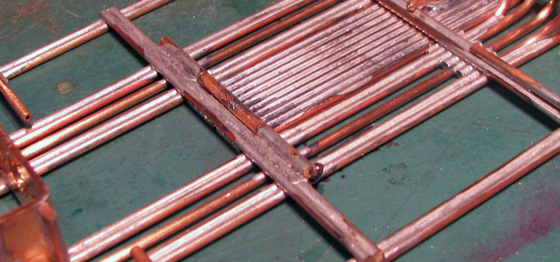There may be nothing so useless in these turbulent times as a Jail Door Construction thread. I consider that a challenge.
While I'm working on Chad Brown's "Blarney Castle Dungeon" sled, I figured I'd talk a little about what I think goes into these flimsy vulnerable and utterly charming little shinies. There's actually a pretty carefully considered engineering going into 'em, the way I do 'em, and what with this being the fourth or fifth fastest-growing class in my local RetroEAST™ group, somebody out there may want to look deeper into building one. So here I go.
Now, everything in one of these sleds should be as flat and straight as we can get it, as it goes down on and comes off of the jig. Being a Jail Door car, it's never gonna be as straight again, but we can start out with high hopes.
I like to settle my mind and hands at the start of the building session, whatever I'm doing. Blasting in and blasting ahead, all hot and bothered from what-all was happening out there in the Real World, that's a good way to waste your first couple operations. Settle down. OMMMM. Have some coffee. (Sure, it'll get you wired, but first it'll get your throat all warm and happy. Remember it's the first few minutes we need to focus into, after that we'll need the Hyper to push us forward!)
Here's a good first op warmup: the paired rails and crosspieces, done in 6"-plus lengths.
I've selected and ScotchBrited a nice straight bronze rod, and clipped it into about 7" lengths. You can lay four pieces down on your jig plate (and Harbor Fright sells a cheeeeep granite surface plate that you'd do well to spring for) and roll them back and forth all together, and if any are the least bit bent you will see it instantly when a gap opens up between the bent one and its neighbor.
What you're seeing here in this picture above is the simple holding kloodge I've made for soldering. See, you don't want to put any pressure on the pair of rods as you solder, because you'll impart a curve or twist into them as you move the iron along the length. No good. So you want some way to just rest them with like no stress at all. What I've done is to rest the rods against two pins in my jig plate, then push down my two wire DuffyDogs to move the rods up against the pins right next to the pins; put a dog in the middle, you'll subtly push a curve into the rail. Having them just like a quarter inch inside the pins, the pressure's negligible. They're just resting against the outside rod.
So now I'm soldering. I've tacked one end together outside and to the left of the left-hand pin and dog, and continued to run the bead for about an inch or more - then I push that bit to the right to get the solder bead inside the pin and dog, and continue. You're seeing me pose for the camera (no, I'm really soldering! Honest!) as I'm midway along the length and moving to the right. As I get near the right-hand pin I slide a little more rod into the working field, and so on.
This results in a very straight and flat rail.
The droparm center section's another place you want to get right. I make mine with a little "bobbin" I once had the good fortune to make up, inside which the loop, or bale, of rod fits. It's very important that this bale fits neat and doesn't stick out of the bobbin, because any place that sticks out will bind against our favorite guide tongues. So we spend some time getting the bale nice and round and perfect. (It's all right just to root a little out on the inside with a Dremel, but try to get the outside real pretty for the customer!) Again, if pictures aren't too boring, ask and I'll show.
Here's a pic of the bobbins I like to use in my droparms. These are .38" diameter and undercut to .250" dia. for a bale of 1/16" rod. I like the depth of this groove, as it allows me to completely bury the ends of my fill rods inside the grommet.
It's at this point that I start to measure carefully, making sure my rod stackup is staying inside my allowed space; to save me some major filing and fitting later.
What you see me doing here is pushing the bale nice and tight into the bobbin as I tack: I've jammed that bar clamp up to the front of the bale, which is restrained by the center post. My right fingers are pressing all the inner rods into the remaining slot in the bale (and that gleeful laughter you hear is my stepson not-taking the shot as he watches steam rise from my fingers). The slot in the bale is tight enough that I can count on the flatness of the finished unit; any other construction - well, come to think of it, any other construction and I wouldn't be talking about all this gobblygook.
So you get the area around the bobbin tacked, then run on out to the end of the droparm. At last, come back and really wet-out the bobbin area to create a solid bronze/solder structure (try to avoid the top and bottom faces, or wick any gops off - you don't want to have to spend a lot of effort re-establishing parallelism of these faces later).











